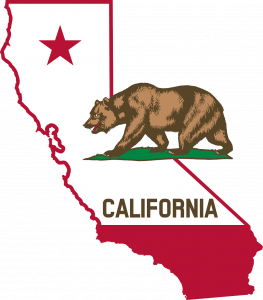Author: Luis Blanquez
California’s long-standing public policy in favor of employee mobility over an employer’s ability to prohibit any worker from going to work for a competitor is included in California Business & Professions Code Section 16600. So how do employers outside of California try to get around this powerful public policy?
First, employers in states where non-competes are still enforceable have attempted to implement choice-of-law clauses in employment agreements with California employees––requiring disputes between the parties to be governed not by California law, but rather by the law of a state more favorable to the enforcement of non-competes. But, as a general rule, California courts refuse to enforce such clauses. This is because California courts will not apply the law of another state where that law is “contrary to a fundamental public policy of the State of California.” In this case, the fundamental policy is open competition and employment mobility.
Conflict-of-law rules vary from state to state. Most states will not enforce a choice-of-law provision that violates the public policy of a state with a “materially greater interest” in the dispute or where the parties enjoy a “substantial relationship” with such state––i.e. where (i) the employee performs his/her work, (ii) the employee’s residence is, (iii) the contract was negotiated and formed, or (iv) the headquarters of the company is, among other factors.
Second, an employment agreement may also include a forum selection clause. In most cases it’s the employer––who sees one of its key employees leave to work for a competitor––who brings the case in the state court of the choice-of-law clause. When that happens, there is not much an employee can do, unless the case is moved to federal court and then transferred to another state. And even then, unless the case ends up in California federal court, the employee will have to rely on the courts of that other state to apply California choice-of-law principles to find the non-compete provision invalid.
To avoid such a hostile scenario, employees in California try to engage in what is called a “race to the courthouse.” They do so in the hope to effectively void their non-compete agreements under California law, before their former employers outside California enforce the non-compete agreement in a different state. This strategy sometimes works, but not always. For instance, the California Supreme Court has held that while California has a strong public policy against enforcing non-competition agreements, it’s not so strong as to warrant enjoining an employer from seeking relief in another state.
In any event, employers outside California have systematically struggled to enforce non-compete agreements in the past. And now it is even more complicated for them. For agreements entered into after January 1, 2017, California Labor Code Section 925 clarifies that employers may not require employees––who primarily work and reside in California––to agree to forum-selection and choice-of-law clauses that select non-California forums and/or laws, unless such employee is “individually represented by legal counsel in negotiating the terms of an agreement.”
RESTRICTIVE COVENANTS
Usually the way employers try to restrict their workers from going to work for a competitor is by including in the employment contract a so-called “restrictive covenant.”
A restrictive covenant is an agreement between an employer and employee that limits an employee’s ability to compete after leaving the employer. The most common and restrictive type of agreement is a non-compete agreement. It prohibits the employee from offering its services within the agreement’s geographic scope for a period of time after leaving the employer. Other types of restrictive covenants may also limit an employee’s ability to solicit the employer’s customers or employees for a period of time.
They are, unquestionably, restraints on trade. But are they unreasonable restraints on trade? In many states outside California that is the issue—if they are reasonable, a court will enforce them. And what does reasonable mean? Again, it depends. But typically, like other restraints on trade, they must usually be narrowly tailored to serve their purpose. They should contain “reasonable” limitations as to time, geographic area, and scope of activity. The laws, of course, vary from state to state. But as a practical matter, most judges are skeptical. Some courts will actually rewrite the agreements to make them reasonable.
Is My Restrictive Covenant Legal Under California Law?
In California, however, the law does not allow employers to enforce a restrictive covenant against their former employees, particularly when it takes the form of a non-compete agreement.
NON-COMPETE CLAUSES
These clauses usually have two primary purposes.
 The Antitrust Attorney Blog
The Antitrust Attorney Blog












